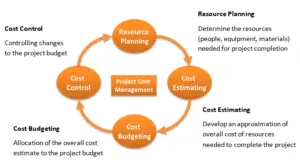
Benchmarking is a powerful tool of project controls, which aims to improve project performance through a systematic approach. The last years it has gained a lot of attention in the Engineering and Construction (E&C) Industry since competition between E&C firms is constantly rising.
Nevertheless, ambiguity regarding the process can lead to failed implementations and disappointing results. Therefore, we prepared a guideline for you, which describes the benchmarking process including key factors for successful implementations.
The benchmarking process for construction projects
To begin with, before performing project benchmarking, we advise you to run a pilot test so that you can ensure that the process defined actually works. It is also important to highlight that regardless of the process, willingness to change and adjust your working procedures according to the benchmarking findings is a key factor for effective implementation.
Figure 1 illustrates the steps to include in the benchmarking process for construction projects.

Step 1: Define the Process
It is important to define the project benchmarks that will be considered in the analysis with clarity. As ‘benchmarks’, we call the reference points from which measurements will be made.
We also need ‘clarity’ regarding the Key Performance Indicators (KPIs) that we will use. These KPIs constitute the ‘metrics’ that “will measure project performance. For instance, the critical factors that we need to monitor and measure.
Understanding the fundamental objectives of the organization and aligning them with the benchmarking process is of utmost importance. Otherwise, it is most likely that the produced results will not have any useful input for improving the performance of your projects.
Step 2: Collect Data
The second step includes collecting and storing data appropriately. This is a key step for the final results since the quality of any analysis conducted later is directly related to the quality of the data available. At this point, it is important to mention, that this step should always follow the step of deciding which KPIs to use. That is because you can easily fall in the trap of assessing only what you can measure instead of assessing the critical factors for success in your construction projects.
Step 3: Conduct Analysis
Data analysis and comparison with the benchmarks follow. In these steps, we assess and compare the measured performance with the performance of the benchmarks. It is crucial to set realistic and achievable targets.
Step 4: Take Action
This step reflects the quality of the work conducted throughout the previous steps and aims to fulfill the ultimate goal of project benchmarking, which is to improve performance. To achieve that, you need to identify current performance gaps and develop improvement plans. It is important to highlight that proper implementation of these plans is a key factor for successful benchmarking.
Step 5: Repeat
Last but not least, repeating the process, while incorporating all lessons learned from previous implementations is necessary if you truly wish to benefit from project benchmarking practices and achieve the desired results.
Repetition is not only required to highlight mistakes in the way you conducted the whole process but also to keep the process valid through the passage of time. For instance, if your organization’s priorities change, you should reflect that in the KPIs.
Effective project planning lays the groundwork for success yet challenges often arise beyond the initial blueprint. Among these…
When you want to determine your project’s performance based on KPI’s and earned value, it is critical to…
Related resources
A selection of user stories from our customers, explaining the value that Cleopatra Enterprise adds to their projects.
Stay within time and budget with construction cost management software
Despite the fact that many estimators still use simple spreadsheet tools, the last years brought us advanced cost estimating software to the market. When integrated in your business, it enables you to better stay within time and budget. Cost estimating models A modern data software tool allows you to perform regression…
Despite the fact that many estimators still use simple spreadsheet tools, the last years brought us advanced cost…
Read blog articleConstruction Industry Project Benchmarking: 3 Best Practices
Project benchmarking is used to improve the cost performance of companies. There are different methods of benchmarking: internal, competitors and strategic.
Project benchmarking is used to improve the cost performance of companies. There are different methods of benchmarking: internal,…
Read blog article
